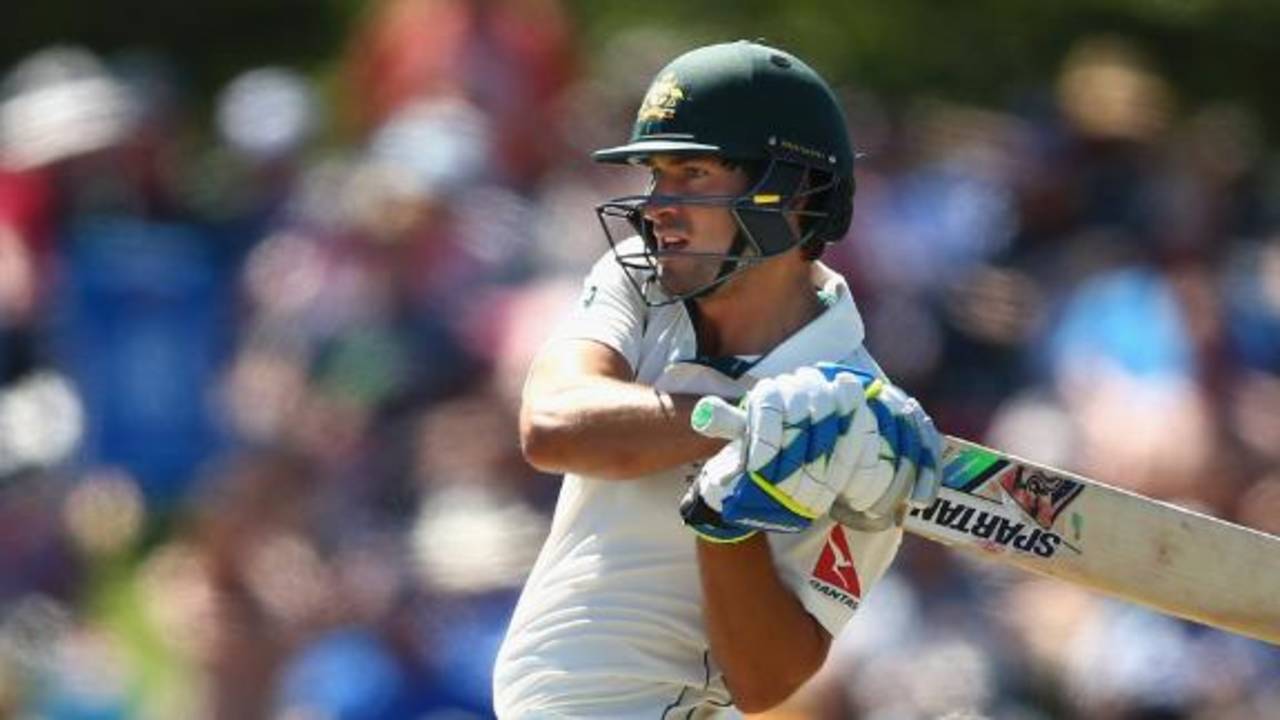Naked and unafraid, a streaker sprinted across Hagley Oval on Sunday afternoon, evaded security, jumped the fence, and was on his way up the grassy banks and away to freedom when he was crash-tackled by a policeman. Cue raucous cheers. A split second later the ground announcer proclaimed that
Joe Burns had just passed his highest Test score. Cue raucous laughter. Good innings, but
great non-sequitur.
It was typical of Burns' summer that he was overshadowed again. Such have been the Himalayan averages of Australia's batsmen in 2015-16 that by comparison Burns' is a mere Mt. Kosciuszko. Still bigger than a hill. Burns started the season as Australia's new opening batsman after Chris Rogers retired, and in that role he has three hundreds and 627 runs at 52.25. They are impressive numbers by any standard.
But Adam Voges has 901 runs at 180.20, Usman Khawaja has 668 at 111.33, Steven Smith has 704 at 78.22, David Warner has 835 at 75.90. Still, none of these men scored three tons in his first ten Tests, as Burns has now done. And three in his first 12 innings opening for Australia - the last few to do that were Simon Katich, Justin Langer and David Boon. All tough men of great Test-match temperament. Men you'd love to have in your team.
Burns is too. Whereas Brendon McCullum's first-day 145 could have been no more unforgettable had Nat King Cole sung it himself, there will be those in the Christchurch crowd who in years to come will recall barely one shot from Burns' 170. Some will struggle to do so tonight at the pub. His boundaries came along the ground, his century came from 191 balls, and his runs kept coming - gradually.
It was a proper Test match knock and as good as his figures are, Burns needed this kind of innings to confirm his credentials. At the
Gabba against New Zealand, he had licence to go hard in the second innings and scored his 129 with Australia well in front. At the
MCG his 128 came against a West Indies attack that was pedestrian, and on a flat road of a pitch pedestrians stand little chance.
At Hagley Oval, things were a bit tougher. True, Australia have had the best of the conditions in both Wellington and Christchurch, where New Zealand have been sent in on green pitches that have dried out so quickly you'd think they were in rehab. But New Zealand's bowlers still made life difficult early in Australia's first innings in both cities. The ball still moved enough, the openers were tested initially.
At the Basin Reserve, Burns hardly even had a chance to test himself against the new ball, gloving down leg side for a duck in the first over. At Hagley Oval he dug in, negotiating his way safely to stumps on day one on 27 from 65 balls. He had lost David Warner early, and lost Usman Khawaja in the fourth over on day two. At 67 for 2, Burns had to take on the lead role.
And he did, for the rest of his innings with his captain at the other end, the man who will lead Australia back to No.1 on the Test rankings if they avoid defeat here. To stay there, they will need more days like today, days of patient compilation away from home. By stumps, Australia had nearly overhauled in 110 overs what New Zealand had posted inside 66. It was a two-paced pitch and a two-paced match.
Together Burns and Smith put on 289 for the third wicket, Australia's highest all-time partnership in New Zealand, and in doing so they kept Australia in the match. At the crease they are a study in contrasts. Burns is tranquil, unhurried. Smith fidgets, tapping this and that, leaving deliveries with an elaborate swat. Unlike Burns, Smith is never still, but he always seems to be still there.
It was remarkable that he was still there after being struck on the helmet by a Neil Wagner bouncer on the verge of tea. Inside his helmet Smith heard a Wagnerian ringing cycle, fell to the ground and initially looked dazed by the blow. But the team doctor Peter Brukner gave Smith the all clear to bat on, and he posted his 14th Test century after Burns had reached his third.
Like Burns, Smith played carefully, often along the ground, picking the gaps and biding his time. Not a single six was struck on day two; 12 had been hit on day one, and half of those by McCullum alone. But not every day is directed by an auteur. Day one was McCullum's slash-fest, day two a more classical period piece. And a day in which, streaker aside, Burns played a starring role.
Brydon Coverdale is an assistant editor at ESPNcricinfo. @brydoncoverdale
